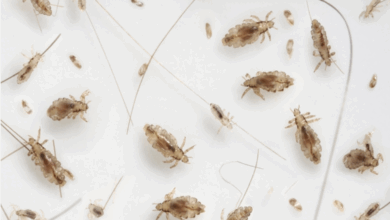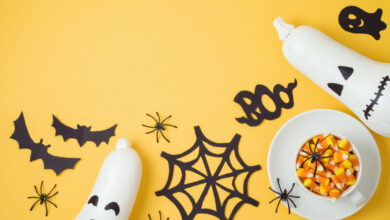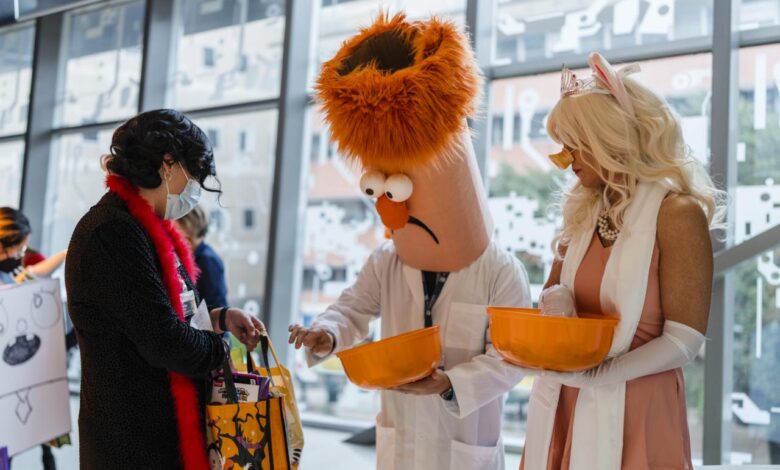
Reasons children go to emergency room on Halloween sets the stage for this spooky exploration. Halloween, a night of fun and frights, can unfortunately lead to unexpected trips to the ER. From costume-related mishaps to food-borne illnesses and allergic reactions, this post delves into the potential hazards, offering insights into underlying medical conditions, and essential preventive measures to ensure a safe and happy Halloween for everyone.
We’ll cover everything from the common costume-related injuries, like sharp edges or tripping hazards, to the potential for food poisoning from unsafe treats. We’ll also look at the importance of recognizing and managing allergic reactions and other potential emergency situations that could arise on this fun-filled night.
Underlying Medical Conditions
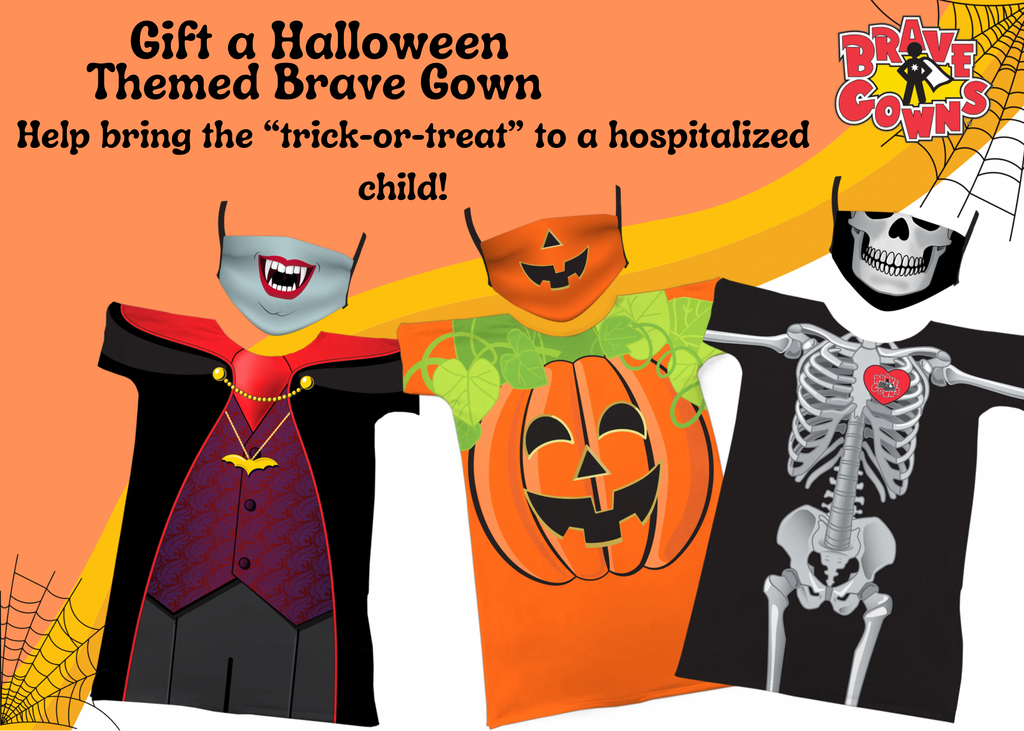
Halloween, a time of fun and festivities, can unfortunately be a stressful time for children with pre-existing medical conditions. Understanding how these conditions might manifest during the holiday season, and how specific foods, costumes, or activities can trigger or exacerbate symptoms, is crucial for parents and caregivers. This knowledge empowers them to take necessary precautions and ensure their child’s safety and well-being.Recognizing the potential for emergency room visits related to underlying medical conditions is essential.
Careful planning, preparation, and awareness of potential triggers can help minimize risks and ensure a more enjoyable and safer Halloween experience for children with pre-existing conditions.
Common Underlying Medical Conditions
Several medical conditions can cause children to require emergency room visits, particularly during Halloween. These conditions, while often manageable, can be exacerbated by specific foods, costumes, or activities associated with the holiday. This knowledge allows for proactive measures to prevent issues.
- Food Allergies: Food allergies, such as peanut allergies, dairy allergies, or shellfish allergies, are prevalent and can cause severe reactions, including anaphylaxis. Exposure to trigger foods, even in small amounts, can result in rapid onset of symptoms. Children with known allergies should carry an epinephrine auto-injector (EpiPen) and inform caregivers and school personnel of their allergies. For example, unknowingly consuming a Halloween treat containing a peanut butter filling could trigger a severe reaction in a child with a peanut allergy.
- Asthma: Halloween activities, such as running, jumping, or exposure to allergens, can trigger asthma attacks in children with the condition. The increased exertion or exposure to irritants, such as smoke or dust, can lead to a decline in respiratory function. Parents should ensure children with asthma carry their inhalers and have an action plan for managing attacks.
A costume that restricts breathing, or exposure to smoke from a bonfire, could trigger an asthma attack.
- Diabetes: The increased sugar intake associated with Halloween treats can lead to high blood sugar levels in children with diabetes. This can cause symptoms such as excessive thirst, frequent urination, and blurred vision. Children with diabetes should carefully monitor their blood sugar levels and adjust their insulin doses as needed. Consuming a large amount of sugary candy or excessive sugary drinks could result in a blood sugar spike.
- Epilepsy: Halloween activities, particularly those involving loud noises or sudden movements, can sometimes trigger seizures in children with epilepsy. Children with epilepsy should discuss potential triggers with their healthcare providers and implement appropriate precautions. Sudden loud noises or intense visual stimulation from costumes or decorations could trigger a seizure.
- Heart Conditions: Children with heart conditions may experience increased stress on their hearts during Halloween activities. Exertion, emotional stress, or exposure to infections can exacerbate existing heart conditions. Children with heart conditions should follow their healthcare provider’s recommendations for activity levels and stress management. Participating in strenuous activities or prolonged exposure to cold temperatures can strain a child’s heart.
Symptoms of Underlying Conditions
Recognizing the symptoms associated with these conditions is crucial for prompt intervention. Different conditions can manifest in varying ways, especially during the Halloween period.
| Condition | Symptoms (Possible) |
|---|---|
| Food Allergies | Hives, swelling, difficulty breathing, vomiting, dizziness, anaphylaxis |
| Asthma | Wheezing, shortness of breath, chest tightness, coughing, difficulty breathing |
| Diabetes | Excessive thirst, frequent urination, blurred vision, fatigue, rapid heartbeat, fruity breath odor |
| Epilepsy | Seizures (convulsions, loss of consciousness), stiffening, jerking movements, staring spells, loss of awareness |
| Heart Conditions | Chest pain, shortness of breath, rapid or irregular heartbeat, dizziness, fainting, swelling in the legs or ankles |
Importance of Pre-existing Conditions in Emergency Room Visits
Pre-existing conditions significantly influence the severity and nature of emergency room visits during Halloween. Recognizing these conditions, understanding their potential triggers, and implementing appropriate precautions are vital for ensuring a safe and healthy experience for children. The specific symptoms and potential for complications are heightened during Halloween.
Costume-Related Injuries
Halloween is a beloved tradition, but it can also present safety risks for children. Costume-related injuries are a significant concern, often stemming from poorly designed or constructed costumes, inappropriate accessories, or even simple carelessness. Understanding these potential hazards and implementing preventive measures is crucial to ensuring a safe and fun Halloween for everyone.
Common Types of Costume-Related Injuries
Costume-related injuries encompass a broad range of issues, often stemming from inherent design flaws or misuse. Common injuries include cuts, scrapes, and lacerations from sharp edges or materials on costumes, especially those involving swords, knives, or other sharp accessories. Injuries can also arise from costume parts that are not properly secured, leading to falls, trips, or collisions. Other common issues include costume materials that are irritating or causing allergic reactions.
Furthermore, costumes that are too large or small can impair mobility and lead to falls.
Safety Hazards Related to Costume Design and Construction
Costume design and construction can pose several safety hazards. Improperly secured or attached accessories, such as masks or capes, can become dislodged and cause injury. Sharp or pointed elements on costumes, like swords or decorative pieces, can cause cuts or punctures. Materials used in costume construction can also be problematic. For example, heavy or poorly-ventilated costumes can restrict movement and lead to overheating, particularly in warm weather.
The use of flammable materials in costumes, or costumes near open flames, presents a serious fire risk. Improperly fitted costumes can cause tripping and falls, particularly if they are too long or cumbersome.
Preventative Measures to Reduce Costume-Related Injuries
Several preventative measures can significantly reduce the risk of costume-related injuries. Firstly, thorough costume inspections are essential. Inspect costumes for any sharp edges, loose stitching, or potential hazards. Ensure all accessories are securely fastened and well-attached to prevent detachment. Choose costumes made of sturdy, non-irritating materials.
For costumes with accessories like swords or props, ensure that they are made of non-sharp or padded materials. Children should be encouraged to avoid running or playing in areas where they might trip or fall, especially when wearing costumes that might restrict their movement or vision. Proper supervision and guidance are also critical, especially for younger children who may not be aware of potential hazards.
Correlation Between Costume Features and Injury Risk
| Costume Feature | Potential Injury Risk | Preventive Measures |
|---|---|---|
| Sharp edges/accessories (e.g., swords, knives, pointed masks) | Cuts, lacerations, punctures | Choose costumes with padded or blunt edges. Ensure accessories are securely fastened. |
| Loose or poorly attached accessories (e.g., masks, capes) | Falls, collisions, entanglement | Double-check all attachments. Use safety pins or other secure fastening methods. |
| Heavy or bulky costumes | Restricted movement, falls | Choose lighter materials if possible. Ensure costumes are appropriate for the child’s size and activity level. |
| Flammable materials | Burns, fire | Avoid costumes with flammable materials. Keep costumes away from open flames or heat sources. |
| Improperly fitted costumes | Tripping, falls, restricted vision | Ensure costumes fit properly without being too tight or too loose. |
Food-Related Illnesses
Halloween treats, while fun, can sometimes be a source of trouble for little tummies. From sugary sweets to potentially contaminated snacks, food-borne illnesses can spoil the excitement for both children and parents. Understanding the risks and how to react is crucial for a safe and enjoyable Halloween.Food poisoning, or foodborne illness, is caused by consuming contaminated food or beverages.
Bacteria, viruses, or parasites can contaminate food at various stages of production, preparation, and consumption. While symptoms can range from mild discomfort to severe illness, prompt action can prevent complications and ensure a swift recovery.
Types of Foodborne Illnesses
Foodborne illnesses can stem from various microorganisms. Some common culprits include
- Salmonella*,
- E. coli*,
- Norovirus*, and
- Staphylococcus aureus*. Each pathogen has its own unique characteristics and the potential to cause different symptoms. For example,
- Salmonella* often leads to diarrhea and vomiting, while
- Norovirus* can cause nausea, stomach cramps, and severe diarrhea. Understanding these differences is crucial for proper diagnosis and treatment.
Unsafe Food Handling Practices
Unsafe food handling practices can introduce harmful microorganisms into food, increasing the risk of illness. These practices can range from inadequate cooking temperatures to improper storage of leftovers. Improper hygiene, such as failing to wash hands before handling food, can also significantly increase the risk. Cross-contamination, which occurs when harmful bacteria spread from one food item to another, is another significant risk.
For instance, using the same cutting board to prepare raw chicken and then raw vegetables can contaminate the vegetables.
Halloween’s a blast, but unfortunately, it can also lead to a fair share of trips to the ER. Kids get into sugary treats, run around with costumes, and sometimes, well, things happen! Thinking about how Australia is leading the way in preventing cervical cancer through widespread HPV vaccination programs like australia using hpv vaccine to eliminate cervical cancer makes me think about the proactive steps we can take to keep our kids safe, not just on Halloween, but all year round.
So, while the candy and costumes are fun, safety is always top priority for those little trick-or-treaters.
Symptoms of Food Poisoning
The symptoms of food poisoning vary depending on the specific pathogen and the individual’s sensitivity. Common symptoms include nausea, vomiting, diarrhea, stomach cramps, fever, and headaches. The severity of these symptoms can range from mild discomfort to severe illness, requiring immediate medical attention. Dehydration is a serious concern associated with vomiting and diarrhea, especially in children.
Steps to Take if a Child Experiences Food-Related Illness
If your child experiences food-related illness after consuming Halloween treats, immediate action is crucial. First, ensure the child stays hydrated by offering clear fluids, such as water or diluted electrolyte drinks. Avoid giving sugary drinks, as they can worsen symptoms. Next, observe the symptoms carefully and note their duration and severity. If the symptoms worsen or persist for more than a few hours, or if the child exhibits signs of dehydration, seek medical attention immediately.
Examples of Unsafe Food Handling
- Failing to refrigerate perishable foods promptly after purchase or preparation.
- Using the same utensils for raw and cooked foods without properly washing them.
- Not cooking foods to appropriate temperatures to kill harmful bacteria.
- Storing food at room temperature for extended periods.
- Failing to wash hands thoroughly before and after handling food.
These unsafe practices can lead to a variety of foodborne illnesses. Proper food safety measures are essential to minimize the risk.
Trick-or-Treating Mishaps
Halloween is a fun time for kids, but it can also present safety concerns. Trick-or-treating, while enjoyable, involves navigating potentially hazardous situations. Understanding the typical accidents and the factors contributing to them is crucial for ensuring a safe and memorable experience for everyone.Trick-or-treating mishaps often stem from a combination of factors, including environmental conditions, pedestrian behavior, and insufficient adult supervision.
Careful consideration of these elements can significantly reduce the risk of accidents and ensure a joyful Halloween for all participants.
Typical Accidents During Trick-or-Treating
Common accidents during trick-or-treating include falls, collisions with vehicles, and injuries from tripping on uneven surfaces or obstacles. These incidents can range from minor scrapes and bruises to more serious injuries, such as fractures or head trauma. Proper precautions and careful supervision can mitigate these risks.
Factors Increasing the Risk of Accidents
Several factors heighten the risk of trick-or-treating mishaps. Traffic conditions play a significant role, with busy streets and high traffic volumes increasing the likelihood of accidents. Poor visibility, such as inadequate street lighting, can also contribute to accidents. The behavior of trick-or-treaters themselves, such as running across streets or not paying attention to surroundings, is a key contributor to risk.
Parental Supervision: A Crucial Role in Preventing Accidents
Parental supervision is paramount in minimizing the risk of trick-or-treating mishaps. Supervising children’s behavior, ensuring they stick to designated routes, and closely monitoring their interactions with traffic are essential. Parents should emphasize the importance of pedestrian safety rules and the necessity of paying attention to surroundings. This proactive approach helps children understand and practice safe behaviors.
Frequent Locations for Trick-or-Treating Accidents
The following table highlights the most frequent locations where trick-or-treating accidents occur. These locations often present specific hazards that need careful attention.
| Location | Potential Hazards |
|---|---|
| Crosswalks | Vehicles failing to yield, children darting into traffic, poor visibility |
| Sidewalks with uneven surfaces or obstacles | Tripping hazards, falls |
| Dark or poorly lit areas | Reduced visibility, difficulty seeing obstacles |
| Streets with high traffic volume | Increased risk of collisions, drivers failing to notice pedestrians |
| Residential driveways and alleys | Cars backing out, children stepping into the path of vehicles, obscured vision |
Allergic Reactions
Halloween, a time for fun and festivities, can unfortunately present unique challenges for children with allergies. Understanding common allergens, recognizing symptoms, and knowing how to react quickly can make a significant difference in managing these potentially serious situations. Preparation and awareness are key to ensuring a safe and enjoyable Halloween for everyone.Allergic reactions can range from mild discomfort to life-threatening anaphylaxis.
Children with known allergies, or those exhibiting unusual symptoms, should always be closely monitored, especially during trick-or-treating activities. Early intervention and prompt medical attention are crucial.
Common Allergens
Halloween activities expose children to a variety of potential allergens. Foods like candy, nuts, and certain fruits are common triggers. Costumes, particularly those with synthetic materials or dyes, can cause skin reactions. Decorations, including latex balloons or certain fragrances, may also be a source of allergic responses.
Signs and Symptoms
Recognizing the signs and symptoms of an allergic reaction is vital. Symptoms can vary, but common reactions include hives, itching, swelling of the face, lips, or tongue, difficulty breathing, wheezing, and vomiting. A sudden drop in blood pressure or loss of consciousness can also occur. Parents and caregivers should be aware of these diverse possibilities and be prepared to act quickly.
Managing Allergic Reactions
Immediate action is critical when a child experiences an allergic reaction. First, remove the child from the allergen. Next, administer any prescribed medication, such as epinephrine auto-injectors (e.g., EpiPen). If the child’s breathing becomes difficult or they lose consciousness, call emergency services immediately. Seek medical attention even for mild reactions, as they can escalate.
Emergency Plan
Knowing the steps to take in an emergency can significantly impact the outcome. This involves having a pre-determined emergency plan and ensuring all caregivers are familiar with the steps. Children with allergies should always carry their prescribed medications. Parents should also educate the child on their allergy and what to do in case of an emergency. A well-prepared approach can be the difference between a minor inconvenience and a serious health issue.
Trick-or-Treating Emergency Plan
| Step | Action |
|---|---|
| 1. Recognition | Identify symptoms: hives, swelling, difficulty breathing, vomiting, etc. |
| 2. Removal | Immediately remove the child from the allergen (e.g., stop trick-or-treating, take away candy). |
| 3. Medication | Administer prescribed medication (e.g., epinephrine auto-injector). |
| 4. Emergency Call | Call emergency services (911 or local emergency number) immediately if breathing becomes difficult or the child loses consciousness. |
| 5. Ongoing Care | Provide ongoing monitoring and medical attention as needed. |
Costume-Related Illnesses
Halloween is a magical time, filled with creativity and excitement, but sometimes the costumes we choose can lead to unexpected health problems. It’s crucial to consider the materials and design of costumes to ensure children’s comfort and safety, preventing potential health issues. Paying attention to these details can make all the difference in having a safe and happy Halloween.Costume materials can sometimes trigger skin reactions or respiratory issues, impacting a child’s enjoyment of the holiday.
Careful consideration of the materials and design of a costume is essential for a safe and healthy Halloween experience.
Costume Materials and Skin Irritation
Choosing costumes made of breathable and hypoallergenic fabrics is paramount to prevent skin irritation. Certain materials, like synthetic fabrics or those with rough textures, can cause rashes, itching, or even allergic reactions in sensitive skin.
- Polyester, nylon, and other synthetic materials often lack breathability, trapping moisture against the skin and contributing to discomfort and potential skin irritation.
- Rough or scratchy fabrics, like some types of wool or poorly finished fabrics, can cause direct skin irritation, leading to redness, itching, and discomfort.
- Certain dyes used in costume fabrics can also trigger allergic reactions in susceptible individuals. These reactions can manifest as skin rashes, hives, or swelling.
Costume Materials and Respiratory Issues
The choice of costume material can also impact respiratory health. Tight-fitting or heavy costumes can restrict breathing and cause discomfort, especially for younger children. Some materials, like certain types of fleece or densely woven fabrics, can also exacerbate asthma or other respiratory conditions in children who are prone to them.
- Materials like thick, heavy, or non-breathable fabrics can cause overheating and discomfort, potentially leading to respiratory distress, particularly for active children.
- Costumes that are too tight or constricting around the neck or chest can impede breathing and lead to shortness of breath, especially in children.
- Consider the materials used in accessories. For example, masks or headpieces made of non-breathable or poorly ventilated materials can cause overheating and respiratory distress.
Specific Materials of Concern
Some costume materials pose a higher risk of causing health problems.
Halloween’s a fun night, but sometimes it leads to trips to the emergency room. Kids can get injured by candy wrappers, or maybe a costume mishap. But, sometimes a less obvious reason for a visit is an infestation of head lice, and if you’re wondering if they jump, you might want to check out this fascinating article on do head lice jump.
Ultimately, while costumes and candy are part of the Halloween fun, it’s important to be mindful of potential hazards and ensure the safety of the little ones.
- Synthetic Fabrics: Polyester, nylon, and acrylic often lack breathability, leading to overheating and moisture buildup against the skin.
- Rough or Scratchy Fabrics: Certain types of wool, poorly finished fabrics, or those with a textured surface can cause direct skin irritation.
- Dyes and Chemicals: Some dyes used in costume fabrics can trigger allergic reactions in sensitive individuals.
- Non-Breathable Materials: Densely woven fabrics or those with limited airflow can restrict breathing and exacerbate respiratory issues.
Importance of Breathable and Comfortable Costumes
Choosing costumes that are breathable and comfortable is crucial for a safe and enjoyable Halloween experience. These costumes allow for proper airflow and minimize the risk of overheating, skin irritation, and respiratory issues.
- Opt for costumes made of natural fibers like cotton or linen, which are generally more breathable and comfortable than synthetics.
- Ensure the costume fits properly without being too tight or restrictive.
- Check for any rough or scratchy seams or edges that could irritate the skin.
- Look for costumes with appropriate ventilation, especially for masks and headpieces.
Unintentional Poisonings
Halloween, a time for fun and festive activities, can unfortunately also present risks of unintentional poisoning for children. Parents and caregivers need to be vigilant and take proactive steps to minimize these hazards. Children’s curiosity and the abundance of potentially harmful substances in the home and neighborhood create a perfect storm for accidental ingestion.
Halloween is a fun night, but unfortunately, it also brings a spike in ER visits for kids. From candy choking hazards to costume-related injuries, there’s a lot that can go wrong. Interestingly, similar to the increasing complications seen in some cosmetic procedures, like the fat freezing procedure, which has more issues than initially thought fat freezing procedure more complications than doctors thought , it’s important to be extra vigilant with kids on Halloween.
Parents should always supervise trick-or-treating and ensure candy is safe. Knowing these potential issues will hopefully help parents keep their children safe.
Common Types of Unintentional Poisonings
Unintentional poisonings during Halloween can stem from various sources. Children might mistake certain substances for candy or other treats, leading to ingestion of harmful materials. This can include household cleaners, medications, or even certain plants. The wide variety of costumes and decorations might also include hidden or easily accessible hazardous materials.
Accidental Ingestion of Harmful Substances
Children, particularly those of preschool and early school-age, are often drawn to brightly colored or appealing-looking objects, making them more susceptible to accidental ingestion. This is often a result of their natural curiosity and exploration of their surroundings. Poorly stored or accessible items, including medications, cleaning products, and even certain plants, become tempting targets. Improper storage practices can significantly increase the risk.
A child might mistake a brightly colored cleaning solution for juice or a pill bottle for a container of candy.
Importance of Proper Storage and Supervision
Safeguarding children from unintentional poisonings requires a proactive approach. Storing potentially hazardous items in high, locked cabinets or out-of-reach locations is crucial. Furthermore, adult supervision is essential, especially when children are playing in areas with potential hazards. It’s important to educate children about the dangers of unfamiliar substances and to instill safe habits. Always keep medications in their original containers and out of sight.
Categorization of Poisonous Substances and Common Sources, Reasons children go to emergency room on halloween
| Category | Substances | Common Halloween Sources |
|---|---|---|
| Household Cleaners | Bleach, ammonia, drain cleaner, oven cleaner | Stored in cupboards or in open containers during cleaning, or potentially disguised as Halloween-themed containers. |
| Medications | Pain relievers, cough syrups, vitamins | Medication bottles that may resemble candy wrappers or other Halloween-themed containers. |
| Plants | Certain houseplants, berries, mushrooms | Decorative plants in the home or yard, or potentially gathered in nature while trick-or-treating. |
| Cosmetics/Personal Care Products | Nail polish remover, hair dye | Easily accessible in bathroom or vanity areas. |
| Cosmetics/Personal Care Products | Batteries, button batteries | Potentially hidden in decorations or costume accessories. |
It’s crucial to remember that the table above provides only a partial list of potential poisonous substances. The specific hazards present in a given household will vary.
Other Emergency Situations: Reasons Children Go To Emergency Room On Halloween
Halloween night, while filled with fun and excitement, can also present unexpected challenges. Beyond the typical trick-or-treating mishaps and allergic reactions, other potential emergencies can arise. Preparing for these situations can significantly reduce stress and anxiety for both parents and children.Understanding potential risks allows for proactive measures to ensure a safe and enjoyable experience for everyone. This includes knowing how to respond to various situations, having the necessary resources readily available, and creating a clear safety plan.
Emergency Situations Requiring Immediate Attention
Halloween night can bring unexpected occurrences that demand prompt action. These could include incidents like seizures, severe asthma attacks, or sudden injuries that require immediate medical intervention. Recognizing the signs of these situations and having a plan in place is crucial.
- Seizures: Recognizing the signs of a seizure, like stiffening, jerking movements, or loss of consciousness, is essential. Ensure you have a plan to protect the child from injury during the seizure and have emergency contact information readily available.
- Severe Asthma Attacks: If a child experiences a severe asthma attack, prompt action is vital. Familiarize yourself with the child’s asthma action plan and have their inhaler readily available. If symptoms worsen, call emergency services immediately.
- Sudden Injuries: Unexpected injuries, such as cuts, fractures, or head injuries, can occur during trick-or-treating or other activities. Having a well-stocked first-aid kit and knowing how to apply basic first aid can significantly impact the situation. Knowing how to manage bleeding, assess the severity of the injury, and provide immediate care can be critical.
Preparing for Emergencies
A well-prepared environment significantly improves the ability to manage unexpected situations. Having the right tools and resources available can be life-saving in emergency situations.
- First-Aid Kit: A comprehensive first-aid kit, containing bandages, antiseptic wipes, pain relievers, and any medications the child needs, is essential. Ensure the kit is easily accessible and that everyone involved in the trick-or-treating activities knows how to use its contents.
- Emergency Contacts: Knowing the location of local emergency services and having emergency contact numbers readily available is crucial. Post these numbers in a prominent location where they are easily visible and accessible during an emergency.
- Safety Plan: Developing a safety plan for the night, outlining responsibilities for adults and children, can significantly reduce stress and anxiety. This plan should include meeting points, communication strategies, and what to do in case of an emergency.
Local Emergency Services
Knowing the location and procedure for contacting emergency services is crucial.
- Local Emergency Numbers: Knowing the local emergency numbers, such as 911, is essential. Ensure that all adults accompanying children know these numbers and can easily access them in case of an emergency.
- Location of Emergency Services: Familiarizing yourself with the location of local hospitals and emergency services can reduce response time in case of an emergency.
Preventive Measures
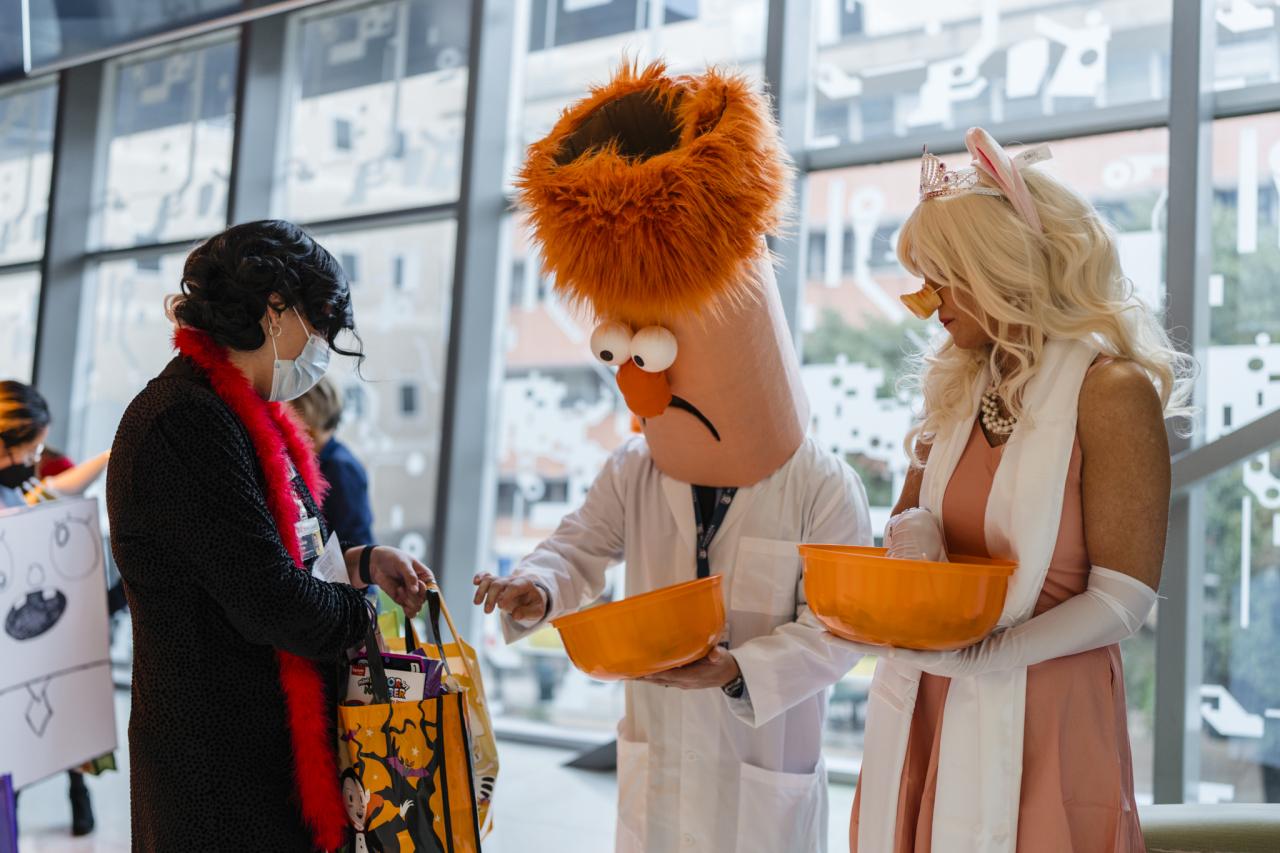
Halloween is a time for fun, but it’s also important to be proactive in minimizing risks for children. Proper planning and precautions can significantly reduce the likelihood of emergency room visits related to Halloween activities. This section details essential preventive measures across various categories to ensure a safe and enjoyable experience for everyone.
Costume Safety
Careful costume design and selection are crucial for minimizing injuries. Children should avoid costumes that might restrict movement, impair vision, or pose tripping hazards. Ensure costumes are well-fitting and appropriate for the child’s age and activity level. Avoid costumes with dangling or loose parts that could catch on objects or become entangled. For example, a costume with a long train could easily get snagged on a doorframe or a tree branch, increasing the risk of a fall.
- Choose costumes that are flame-resistant, especially for trick-or-treaters who will be near bonfires or open flames.
- Check for sharp or pointed edges on costumes and accessories.
- Ensure costumes are brightly colored for increased visibility in low-light conditions.
- Consider using reflective tape or materials on costumes for added visibility.
- If a costume has a mask, ensure it allows for proper breathing and does not obstruct vision.
Food Safety
Halloween treats can be a source of potential food-related illnesses. Strict adherence to food safety protocols is essential. Inspect all treats before allowing children to consume them. Ensure that treats are stored safely and appropriately. Parents should supervise children when eating treats and encourage thorough handwashing before and after consuming food.
- Thoroughly inspect all treats for signs of tampering or spoilage.
- Avoid giving out or consuming raw or undercooked foods.
- Ensure proper storage of treats, especially those containing perishable ingredients.
- Provide access to hand sanitizer and encourage frequent handwashing.
- Consider offering a selection of healthier, non-perishable snacks in addition to candy.
Environmental Hazards
Halloween activities often take place in various environments, including streets, parks, and homes. Parents must be aware of potential hazards in these areas. Ensure that children are aware of traffic safety and crosswalks. Avoid areas with heavy pedestrian traffic or potential dangers. Proper supervision is critical to minimize risks.
- Supervise children closely, especially in unfamiliar or potentially hazardous environments.
- Ensure adequate lighting when trick-or-treating in low-light conditions.
- Remind children to stay on sidewalks and cross streets safely.
- Be mindful of potential hazards like uneven surfaces, obstacles, or poorly maintained areas.
- Keep an eye out for any environmental hazards or unusual situations.
Summary Table of Preventive Measures
| Category | Preventive Measure | Risk Reduction |
|---|---|---|
| Costume Safety | Choose flame-resistant costumes, check for sharp edges, use reflective materials | Reduces risk of fire, cuts, and accidents |
| Food Safety | Inspect treats, avoid raw foods, proper storage, handwashing | Reduces risk of food poisoning |
| Environmental Hazards | Supervision, safe crossings, adequate lighting, awareness of hazards | Reduces risk of accidents and injuries |
Last Recap
In conclusion, Halloween can be a thrilling experience for children, but parents and caregivers must be prepared for potential emergencies. Understanding the common reasons behind children’s ER visits on Halloween, along with proactive preventive measures, is crucial for ensuring a safe and enjoyable celebration. By being informed and prepared, we can all help minimize risks and maximize the fun for everyone.

